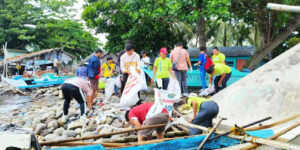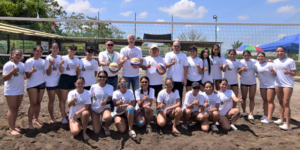
Despite our government’s delaying tactic that mostly included full-on denial, the Omicron variant of COVID-19 is most definitely in our communities, happily transmitting as infectiously as it possibly can in a country where non-existent testing and contact tracing made it one of the worst places to be in during a pandemic.
By now, most if not all of us must’ve known someone who has been infected with COVID within the past two weeks. Either a close family member or friend in Metro Manila, or a close contact has probably tested positive or exhibited mild symptoms during the holidays.
In my case, a January 1 family gathering resulted in a close contact with someone who tested positive after a few days. The visiting cousin who was home for the holidays informed us she developed mild symptoms January 4, got tested, and got positive results. All of us who considered ourselves close contacts because of the nature of the gathering that involved food and drink immediately went into home quarantine upon learning of her predicament. We had taken precautions such as mask wearing when not eating/drinking and making sure the venue was well ventilated, but a close contact is a close contact and we have already seen from past anecdotes that didn’t end well that you can never be too cautious as far as the coronavirus is concerned.
We had no symptoms and our analysis of the contact timeline gave us a bit of confidence that were involved in a near miss. However, I still got a RT-PCR test on January 7, a day after learning of the self-declared close contact’s positive result, mainly because of workplace requirements after I reported the contact. My wife, on the other hand, got an antigen test. Thankfully, we both tested negative and the entire family remained symptom-free. As other the other contacts slowly got their negative RT-PCR’s, we gained more confidence that our New Year started with a really close call.
While waiting for my RT-PCR test results, I got word that my younger brother in Paranaque had tested positive after developing mild symptoms. He and his entire family had mild symptoms without losing their sense of taste or smell so it was most probably Omicron. In his case, his one test yielded +4 positives because his wife and 3 kids that ranged from a teenager to a 5-year-old didn’t bother to get tested anymore. Based on that, it is probably safe to assume that the country’s active cases should be multiplied by at least 3 or 4.
On the other end of the spectrum is my sister-in-law who is part of the COVID command center in the Philippine General Hospital. Despite having been there since the start of the pandemic, she has never been infected (knock on wood). Her secret is that she never takes off her mask while on duty, not even to eat. I’m guessing she eats or drinks in her car in the parking lot.
Based on those three COVID stories, I came up with the following conclusions:
The first is that proper mask-wearing is super effective. Because we won’t be able to stop COVID or Omicron or whatever the next mutation is called, it is something we will have to get used to if we don’t want to get infected. Holding gatherings and going to work, even in high-risk environments is possible if we are mask-conscious all the time.
The second is that while it is more infectious in Metro Manila, it could happen to us here in Negros if we are not careful. I suspect that we are already on our way there because of the Omicron holidays and the reporting lag. However, if we have somehow dodged the Omicron bullet, we have to be on very high alert and maximum cautiousness if we don’t want what is happening to the NCR to come here. If we can afford it, a series of self-imposed lockdowns and quarantines for the next couple of weeks should be able to hold the fort.
The third realization is that if we can manage to control this surge and prevent our health care system from collapsing, Omicron could be the variant we learn to live with. I, for one, can imagine living with the increased infectiousness but reduced lethality because after all we’ve been through, it is easy to imagine us continuing being cautious and vigilant in terms of mask-wearing, social distancing, ventilation and personal hygiene to prevent infection. As long as we follow the established science-based protocols and keep vaccinated, we can adjust our personal, social and work lives to keep ourselves as safe as possible and even if we cannot eradicate the coronavirus, we can work around it because if you come to think of it, we have no other choice but to do so.*







